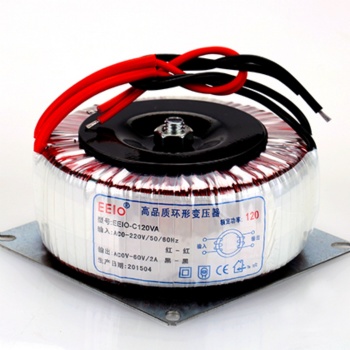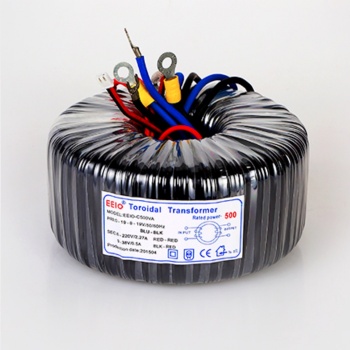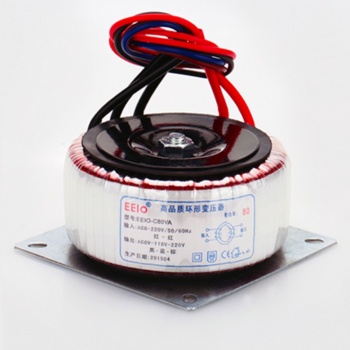News
Two Parameters to Quickly Judge The Quality of Power Transformer
Two Parameters to Quickly Judge The Quality of Power Transformer
In addition to checking the accuracy of parameters, performance and insulation safety, judging the quality of power transformers also requires reference to its working efficiency, load capacity, heating temperature rise, etc. This article mainly introduces a quick and easy method to judge the quality of power transformers by two parameters.
Power transformer
Click to consult EEIO Toroidal Transformer
1. Copper loss
The copper loss of the power transformer refers to the loss caused by the DC resistance of the primary and secondary conductors. Therefore, to measure the copper loss, you only need to add the rated current to the transformer to measure I*I*R. Under normal circumstances, the sum of iron loss and copper loss should be less than 45W for a 500W transformer. As the capacity of the transformer decreases, its loss increases accordingly, because the copper loss of a small transformer is greater than the iron loss.
2. No-load current
The no-load current of the power transformer refers to the primary current measured when the primary is connected to the rated voltage and the secondary is completely unloaded. The product of this current and the incoming line voltage is the no-load loss, which refers to the core loss of the transformer. It is the sum of the eddy current loss and hysteresis loss of the core in the AC magnetic field. Therefore, the smaller the no-load current of the transformer, the better the quality of the iron core and the reasonable design of the ampere-turns.
In this case, it is generally believed that the no-load current is similar to the iron loss, and the size of the no-load current also reflects the size of the iron loss. The no-load current of a transformer less than 10W is about 7~15mA; the no-load current of a 100W transformer is about 30~60mA, which is considered normal. A transformer with large iron loss must generate a lot of heat. If the ampere-turn design is unreasonable, its no-load current will increase greatly, resulting in an increase in temperature rise, and its life will not be long. The no-load current of a general toroidal transformer should be lower than that of an ordinary plug-in transformer.
Therefore, the smaller the open-circuit loss plus the short-circuit loss of the power transformer, the better the quality of the transformer, the lower the temperature rise during operation, and the better the load capacity. In this way, the performance of the transformer can be known in a very short time.
Categories
Contact Us
- 0086 13923119482
- info@eeiotransformer.com
- 0086 13923119482



